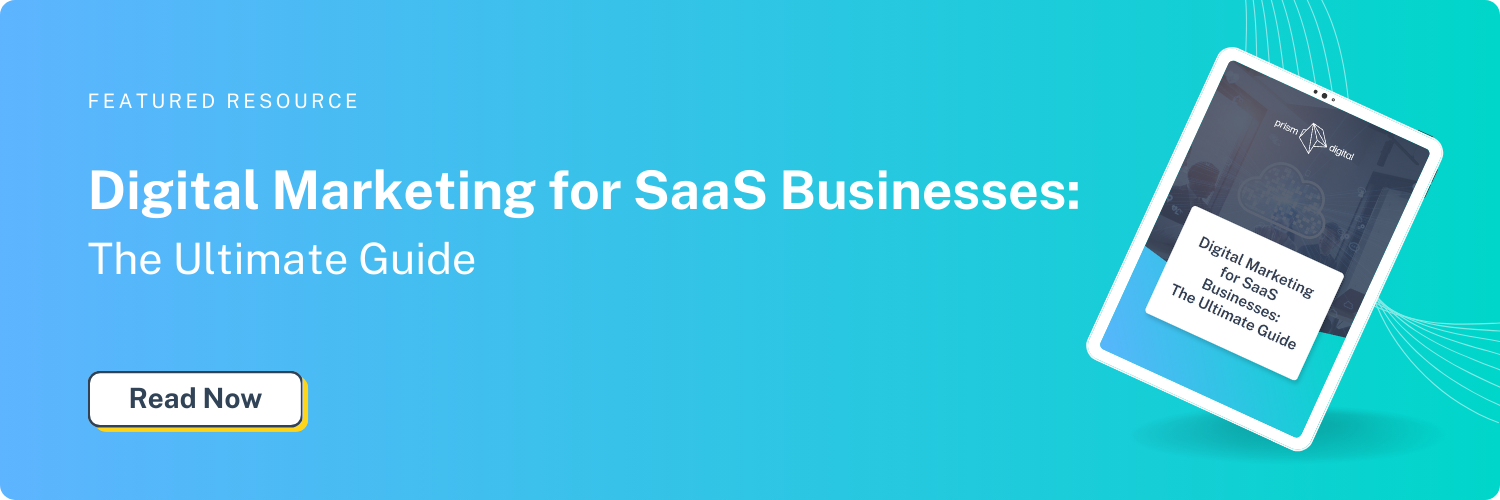If you’re reading this, we’re going to assume you’re looking for some ways to stand out from the competition and acquire more customers. Because let’s be honest, the digital age has changed the way marketers communicate with and sell to B2B audiences, and the competition is fiercer than ever. As technology continues to evolve, we need to move away from using outdated marketing strategies and adapt a more integrated and fluid approach:
As a marketer, you have to adapt to changes to meet the expectations of your audience. To ensure your business is agile, you need to optimize your digital marketing strategy to drive digital transformation and ensure you’re talking to the right people on the right channels.
As a B2B company, you need to be able to speak to businesses, and this requires a different approach to engaging individual consumers. In this blog, we explore the most successful digital marketing strategies and get inside B2B marketing.
1. Set up a well organized company website
Websites for business are a given and aren’t a marketing revelation by any means. In order to design a website fit for today, you need to monitor and help it to evolve. You have to make sure it showcases your expertise, provides solutions to potential clients, and acts as a point of easy contact for customers.
Your company website should be an industry resource that makes it simple for customers to know exactly what you do, in seconds. Technical and convoluted explanations can come later as people browse through your site or download a resource such as an eBook. Most importantly, your website should offer you a way to generate leads and capture customer information.
A B2B website must:
- Be relevant to your target audience
- Be mobile responsive
- Include clear calls-to-action that direct people to do something e.g. request a quote, schedule a demo, download a white paper
- Feature up-to-date testimonials and accompanying company logos
- Provide up-to-date and engaging content either through a blog or bespoke landing pages
- Feature links to your social media pages
- Include relevant industry information such as stats or research
- Generate relevant and credible backlinks to drive traffic
- Be monitored and updated regularly
Ultimately, the more information you can provide on your website that addresses your audience's pain points and provides solutions, the better. If your website doesn’t offer this, consider getting your team together to analyze your website data, audit your content and review and develop your personas.
2. Understand search engine optimization (SEO) and utilize content marketing
Without SEO, it’s impossible to get new visitors to your site, and without visitors, you can’t grow your business. But what is an SEO strategy and how does it work?
Basically, SEO helps search engines like Google find your website and raises it higher in the rankings. To be found, you want to be on the first page of any search; the goal would be to find and use the most effective keyword phrases to help search engines find your site.
You’ll also want to look at other marketing tactics to improve SEO. Creating a blog is a must as this not only helps improve SEO but also helps to establish you as an industry thought leader and grab a quality audience. Your expertise can offer great value to existing clients and help you draw new clients to your site. As we mentioned, keep in mind that the B2B cycle can be a long process so if you can lure clients back to your site with strong content, you’re more likely to forge trust, which can, in turn, push them to the end of the conversion funnel.
You should also consider looking for outside engagement and guest blogging opportunities that link back to your blog and website. This will help increase awareness of your content and contribute towards an effective digital content strategy.
Video is also a hugely popular content format that offers many opportunities to engage and educate your audience, particularly with the rise of platforms such as TikTok and Instagram. Other types of content can include infographics, e-books, white papers, and case studies.
3. Link your marketing efforts on- and offline
To get the most bang for your marketing buck, integrating and optimizing your online and offline marketing efforts is essential. You can tie the two together seamlessly to reach as many companies as possible and provide superior customer service.
Examples of B2B marketing online and offline integration include:
- Direct offline activity online using a landing page, QR code or keyword
- Gather email addresses at offline events such as conferences or networking events
- Use bespoke coupons that can be used on a website or landing page. Once they are used, you know the customer has come from an offline campaign.
- Direct people to your social media channels using initiatives such as a competition or eBook download
- Use custom URLs on offline marketing activities so you can track activity
- Offer incentives that can only be retrieved online - e.g. newsletter subscription to get 20% off a company’s first order
Linking your B2B marketing online and offline makes monitoring the success of a campaign much easier and can engage a key stakeholder in a prospective business that you may have not been able to capture otherwise.
4. Widen your audience with captivating social media marketing
It might be tempting to avoid using social media as part of your B2B marketing strategy. It can be labor-intensive and requires creativity to ensure you keep visitors engaged. However, social media is a valuable channel for any business, and new platforms such as TikTok and WhatsApp are becoming more popular than established networks like Facebook.
In fact, 83% of B2B marketers use social media marketing, the second most popular channel after search engine marketing. When it comes to the platforms B2B businesses use there are some that help drive engagement better than others.
One of the easiest ways to use social media is to leverage your blog content. Posts that direct people to useful content provide relevant information and improve SEO. You can also cross-promote across all your social media platforms but just be sure to tailor your message on each one to match the audience and platform
You can use social media successfully by offering content such as:
- Industry tips
- Industry news
- Pain point solutions
- Updates to your products/services
- Glowing client or partner testimonials
- Links to case studies and whitepapers on your website
- Video testimonials
- Links to instructional videos made by your company
A great example of a B2B brand using LinkedIn effectively is Dropbox. With a focus on behind-the-scenes content to promote their way of working, their employees are called ‘Dropboxers’. They use LinkedIn effectively by showing photos and videos of their teams and also promoting relevant blogs and showcasing their products.
The one thing you want to avoid on social media is overt sales pitches. Instead, ensure your content informs and engages to spike curiosity, direct people to your services and increase brand awareness.
5. Get on board with PPC campaigns
If your budget allows, consider including a Pay-Per-Click (PPC) campaign in your digital marketing efforts.
The beauty of SEO and content is that it’s relatively inexpensive, or even free if you have the talent to do it yourself. However, if you are not currently seeing the results you want, the use of PPC campaigns is an excellent option, with easy budgeting to suit your needs as you only pay if an action has been taken - in this case, a click. The best thing to do is use a paid media campaign tracker to keep an eye on spend and performance to ensure you understand what’s working.
Some platforms such as Facebook will also charge you for engagement or impressions or offer you the choice of how you wish to pay. This provides audience segmentation to reach your exact target and can be a great tool to drive leads and raise brand awareness.
6. Continuously redefine your targets
The best thing about digital marketing is that it has improved reach exponentially. Your ability to target demographics with great precision means you can invest in campaigns that are far more effective.
These campaigns are available through Google searches and you can target people at all stages of the buyer journey. The trick is to be clever with short- and long-tail keywords and review search query reports to make sure you know what businesses are searching for.
You can also target businesses on a micro-level through social media. Platforms such as Facebook and LinkedIn have sophisticated ad targeting that allows you to choose prospects based on job title, education and even interests.
Combining targeting with results-based analytics will help you to fine-tune your campaigns to see the best results for the least amount of money. Free tools such as Google Analytics help you understand how effective your marketing is and how it affects your targets.
Your B2B marketing strategy - let’s get the ball rolling!
The easiest way to begin your B2B digital marketing strategy is to list all the digital resources you own, including websites, blogs, landing pages, and social media channels. If you have access to analytics, look for the assets that have helped generate leads or close sales. If you haven't access to this data, examine the resources that received the most visits, clicks, or shares. That will provide insight into what has been working well for your business.
Next, use these data insights to determine where you can build on your resources such as more social media pages or trying out a PPC campaign. Consider your budget and use a media budget tracker to decide where to invest money and refer to your analytics to see where you’re most likely to see the best ROI.
Once you've determined the digital marketing tactics that your company needs to use, create a content calendar, so you have a plan in place. This plan should include:
- Title/Topic
- Where it will be posted
- When it will be published
- Crossover opportunities for links
- PPC ads
- Content provider
You should also consider using influencers as they can be very effective in getting your content and message shared. If you need some inspiration, have a look at brands that successfully use B2B influencers in their strategy.
Remember, it’s never too late for your business to start using digital marketing tactics. These six B2B marketing strategies will provide you with an easy way to incorporate digital marketing into your plan. Equally, if all of this just isn’t your bag, or your marketing team needs some fresh insight, the experts at Prism can help take your digital marketing to the next level.
.png?width=200&height=73&name=Logo(1).png)


